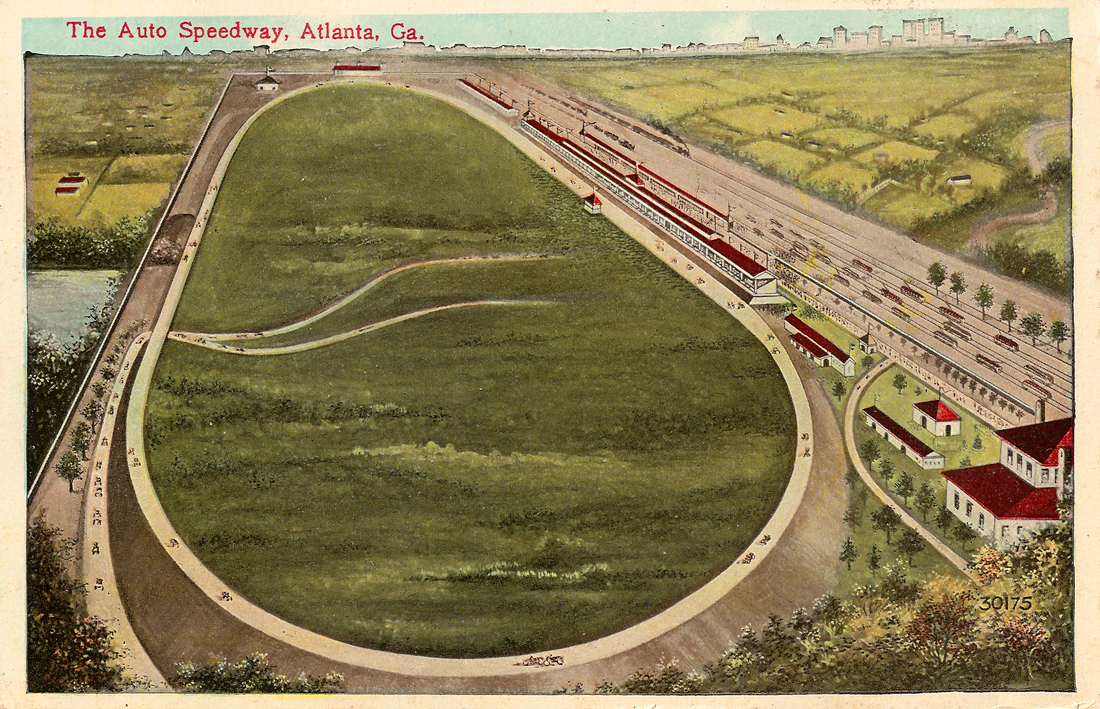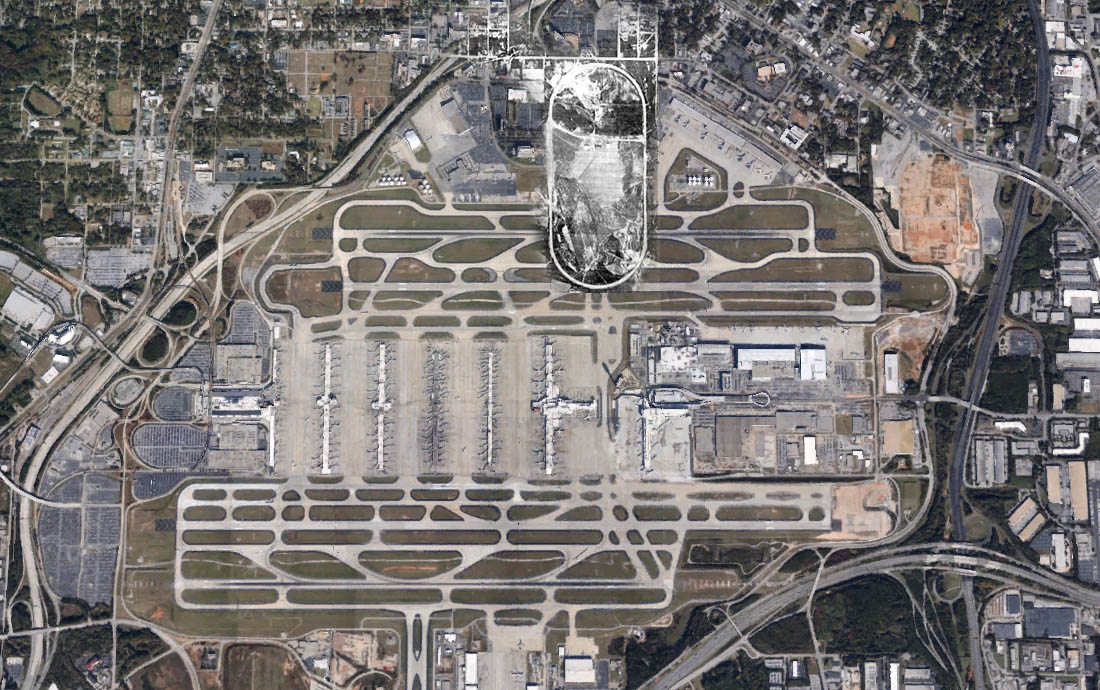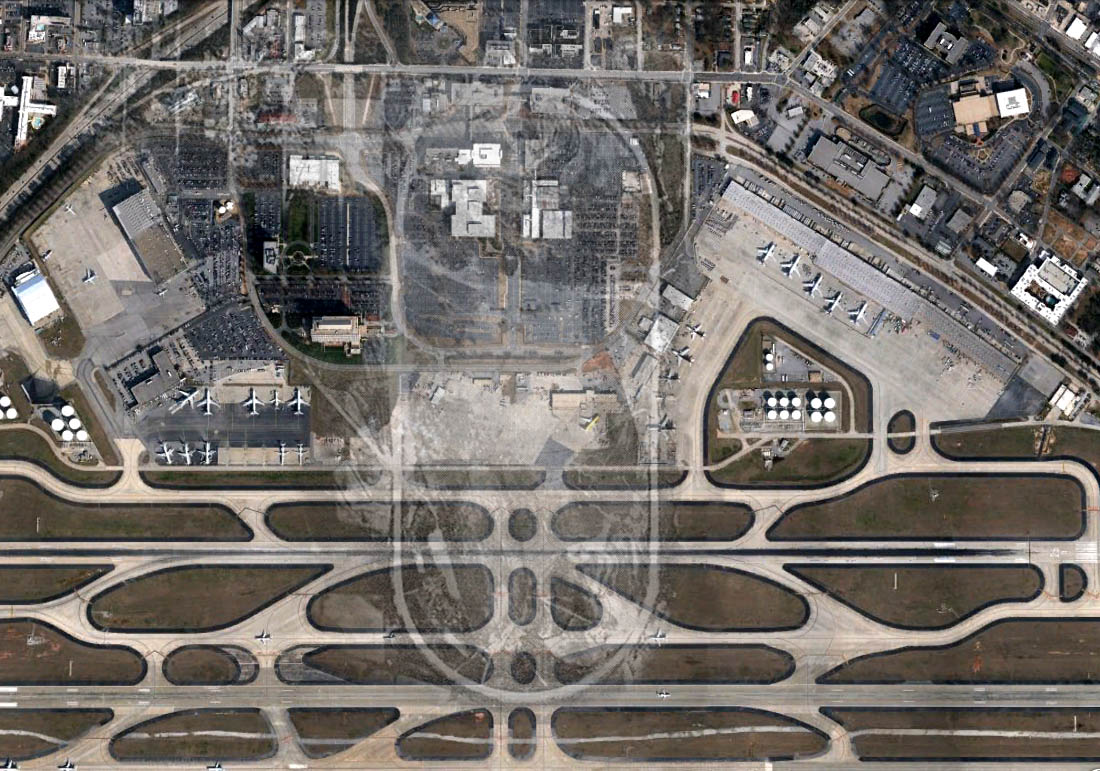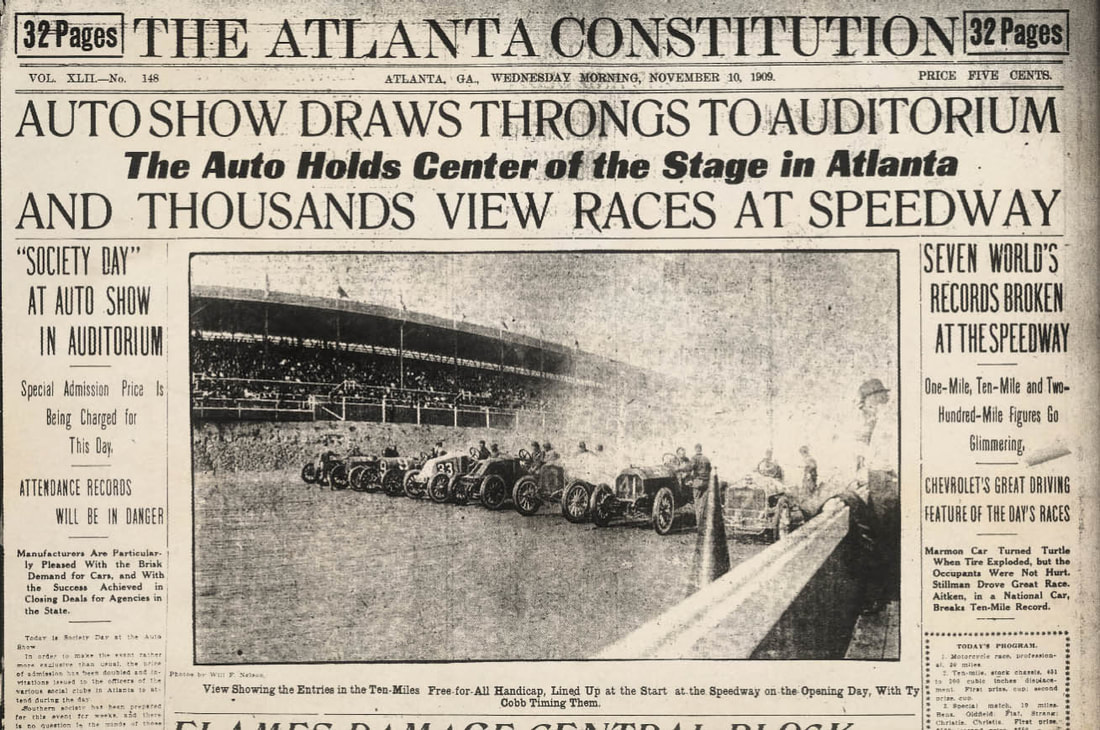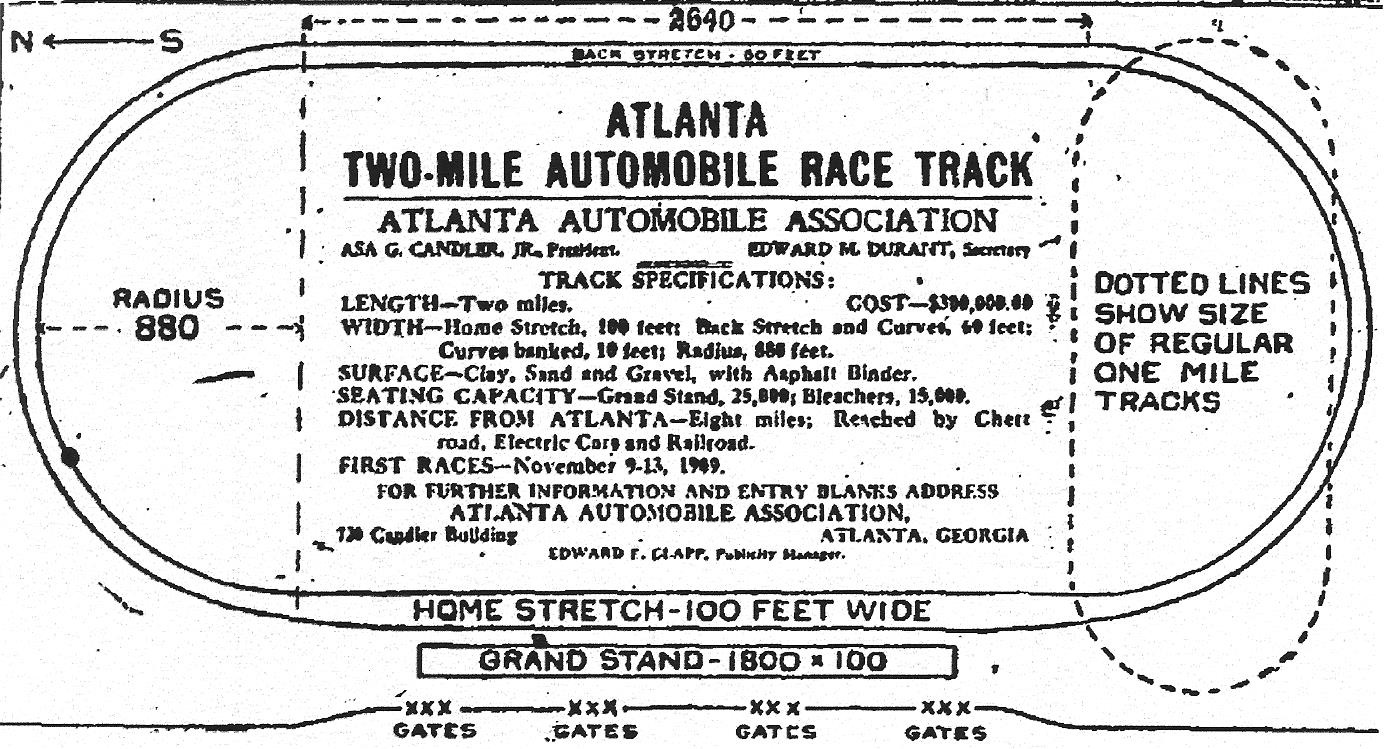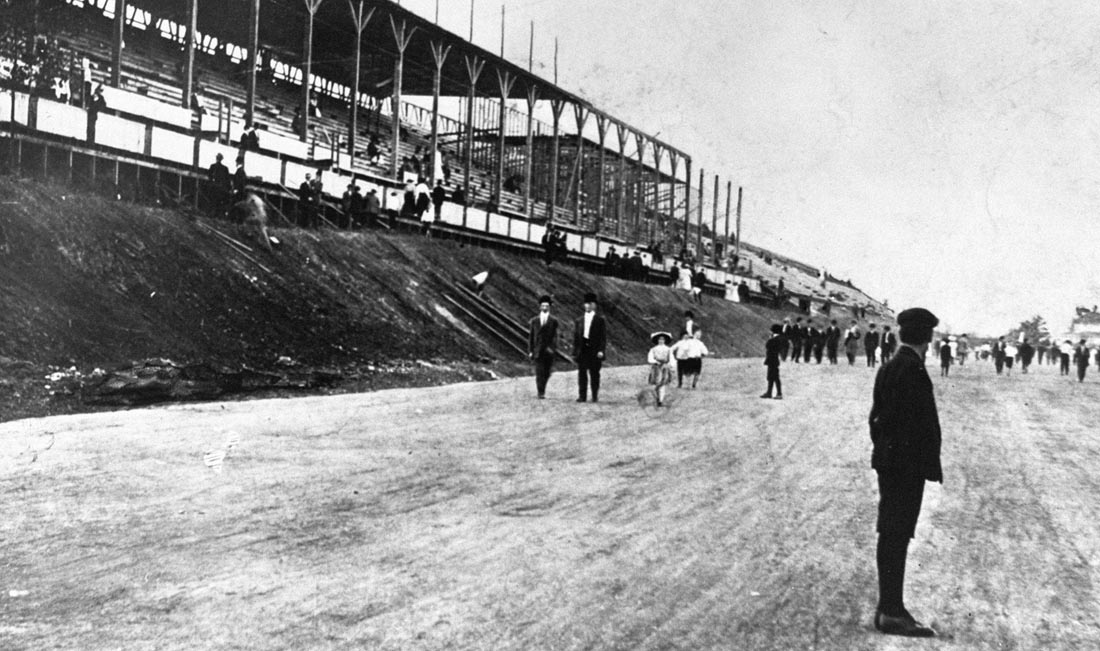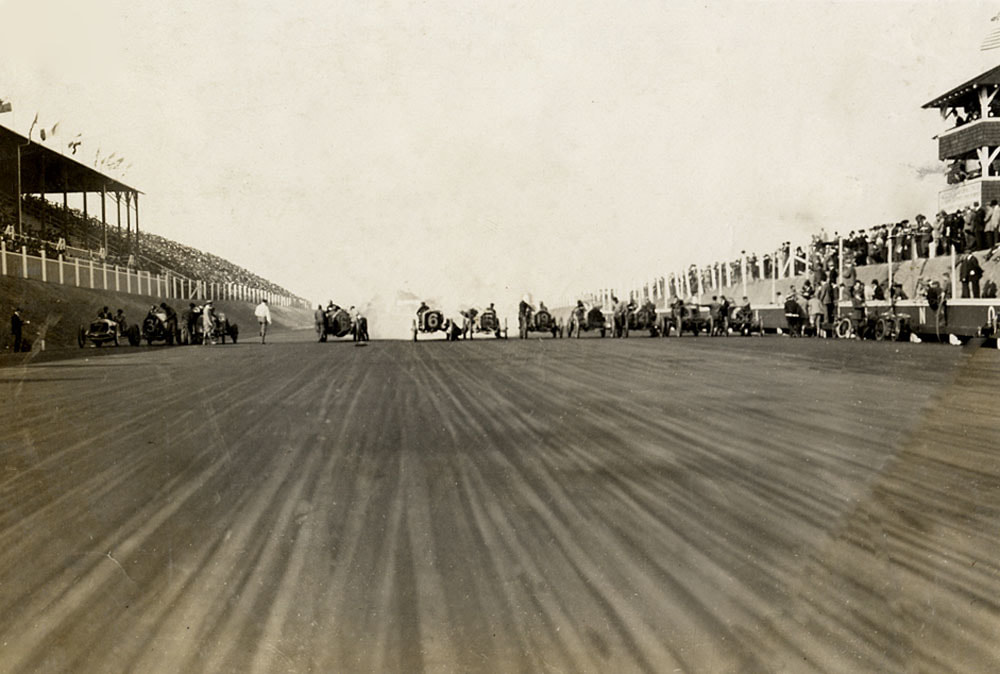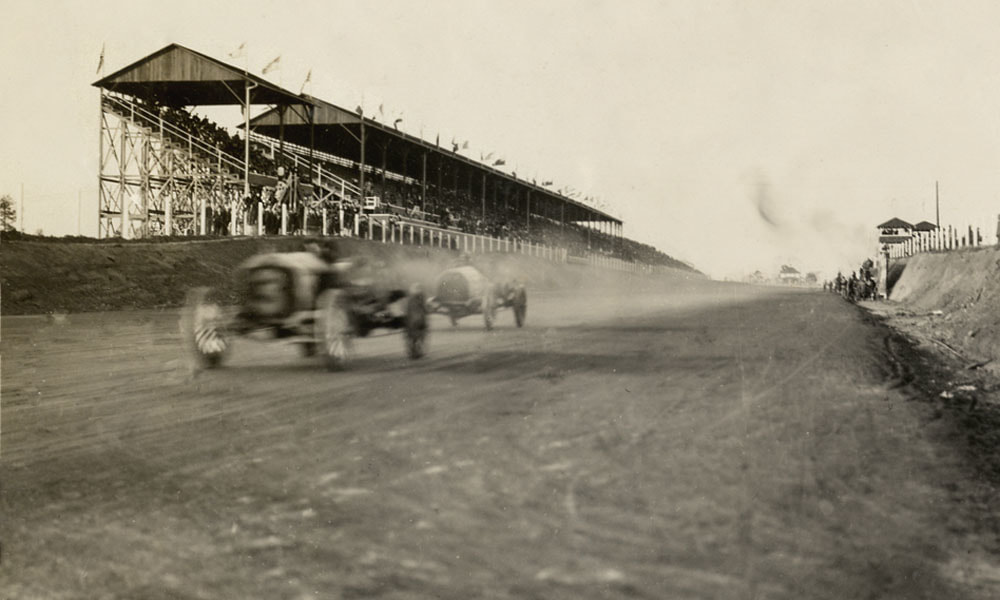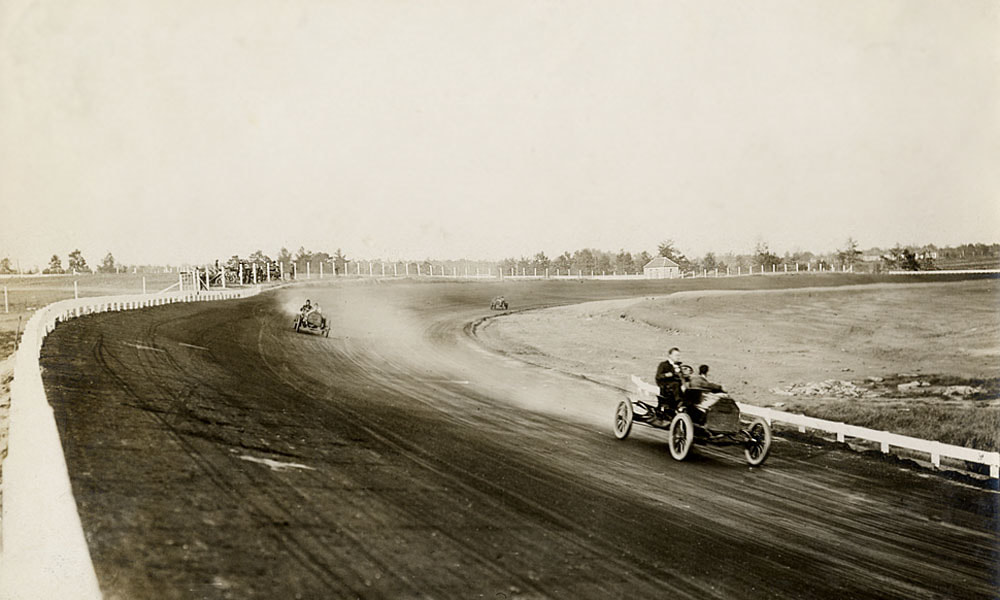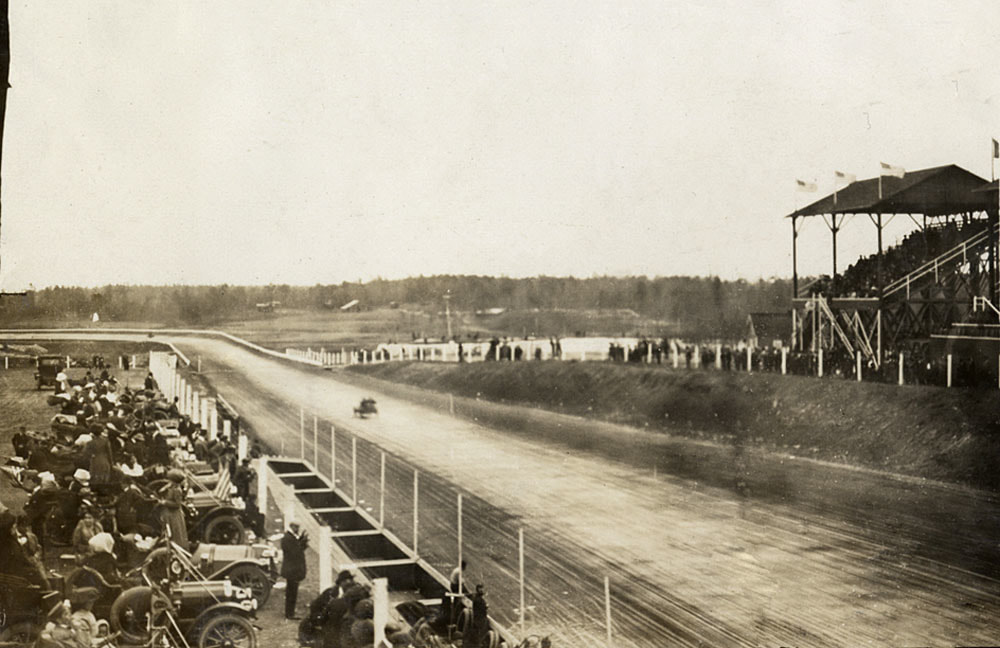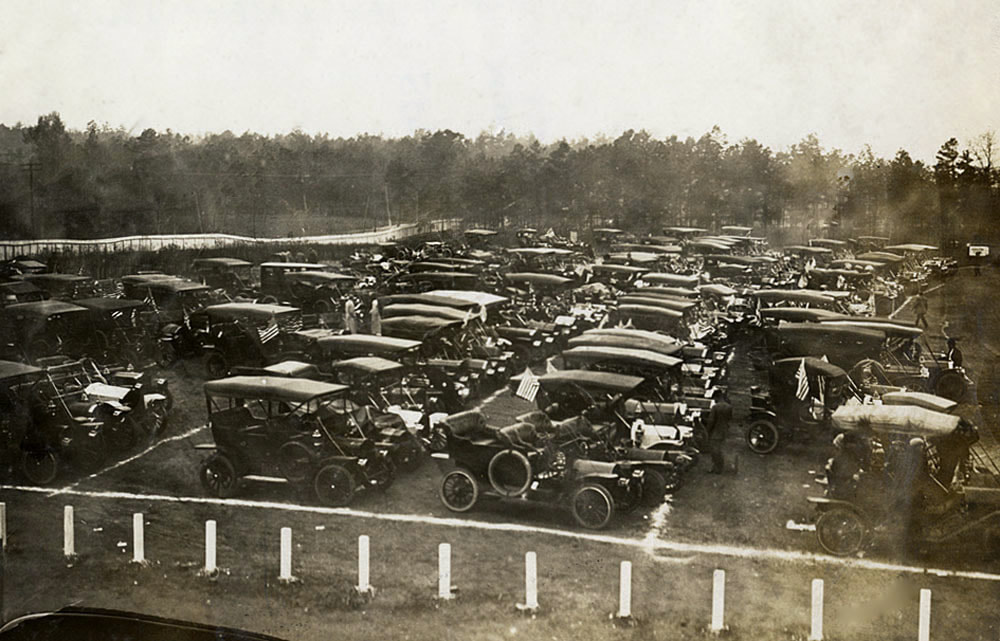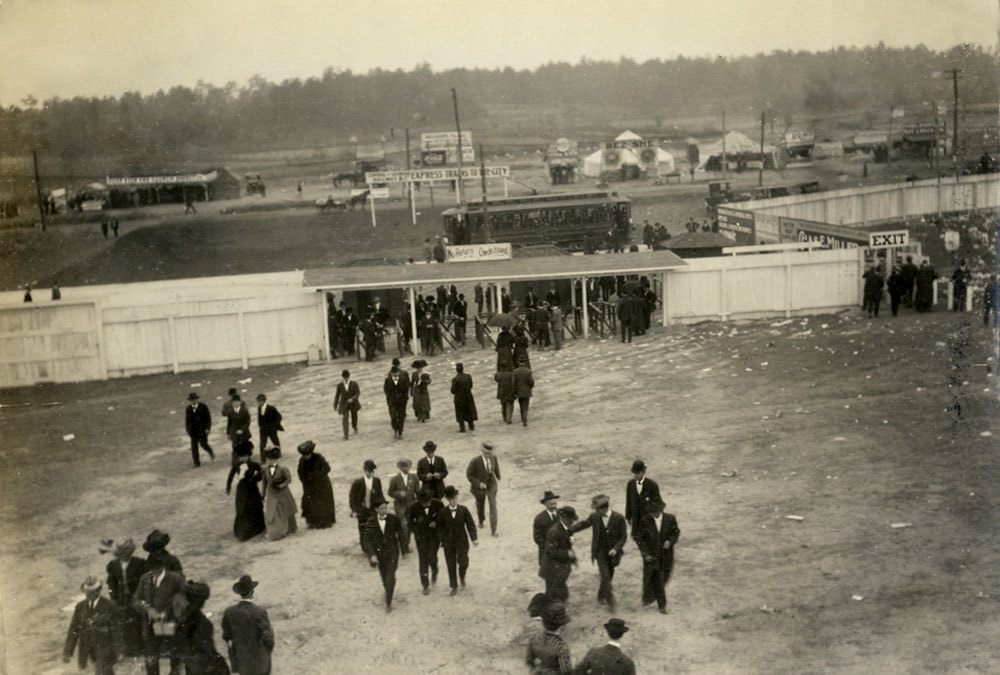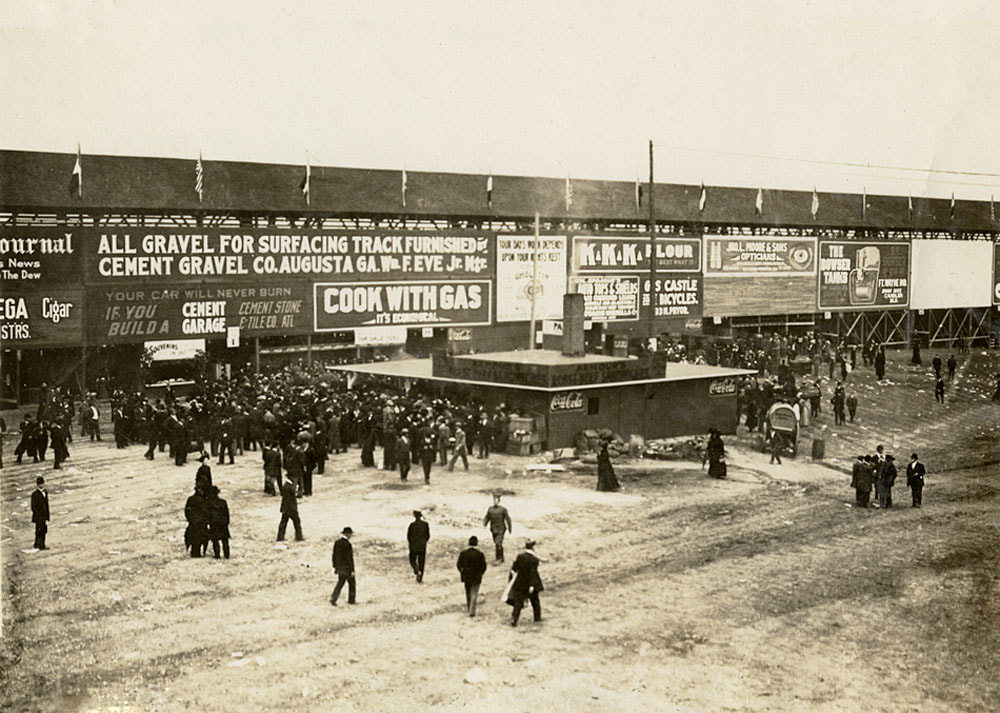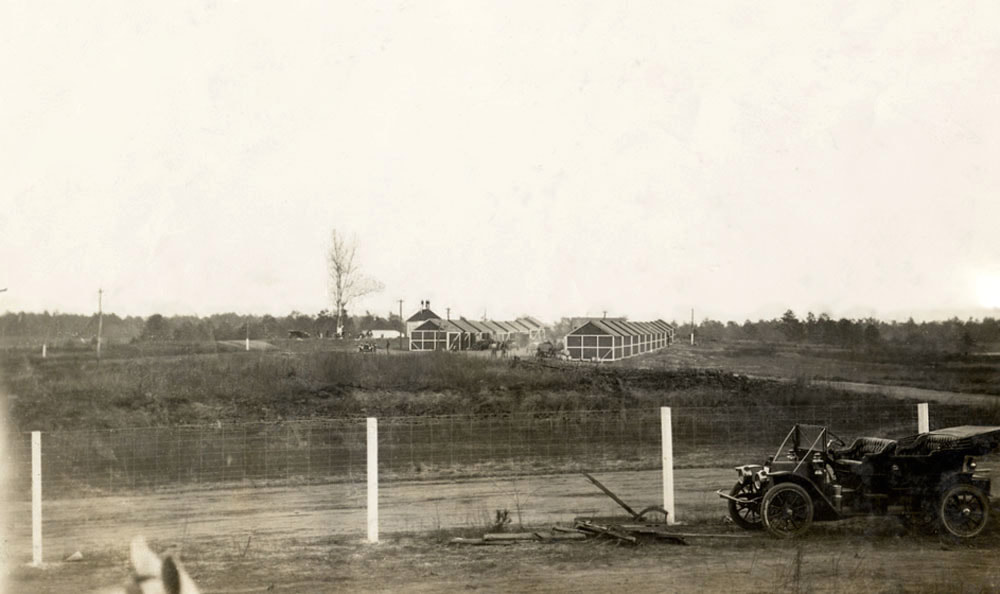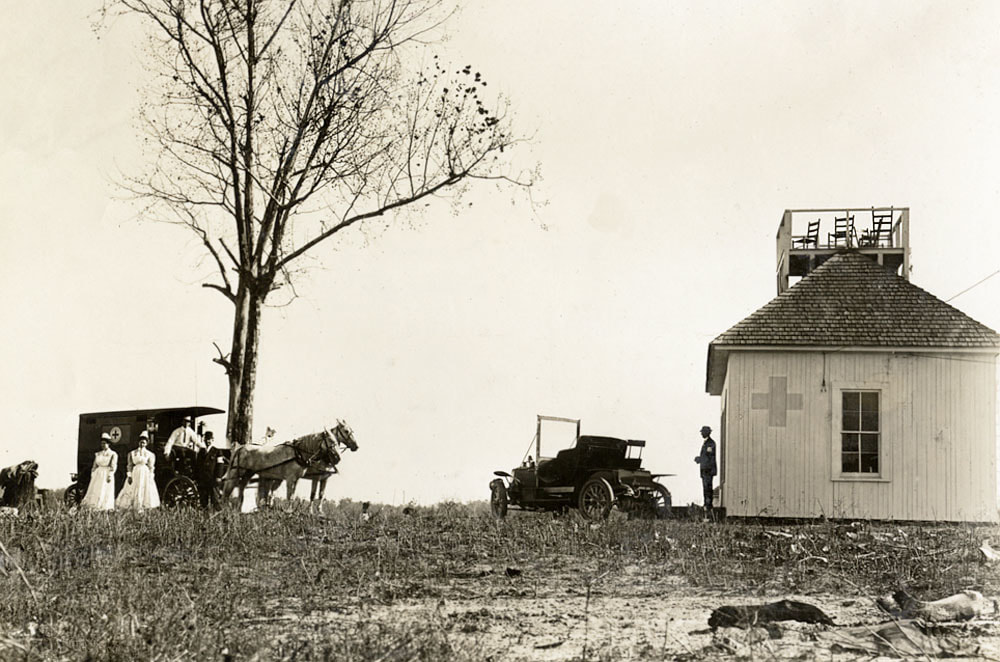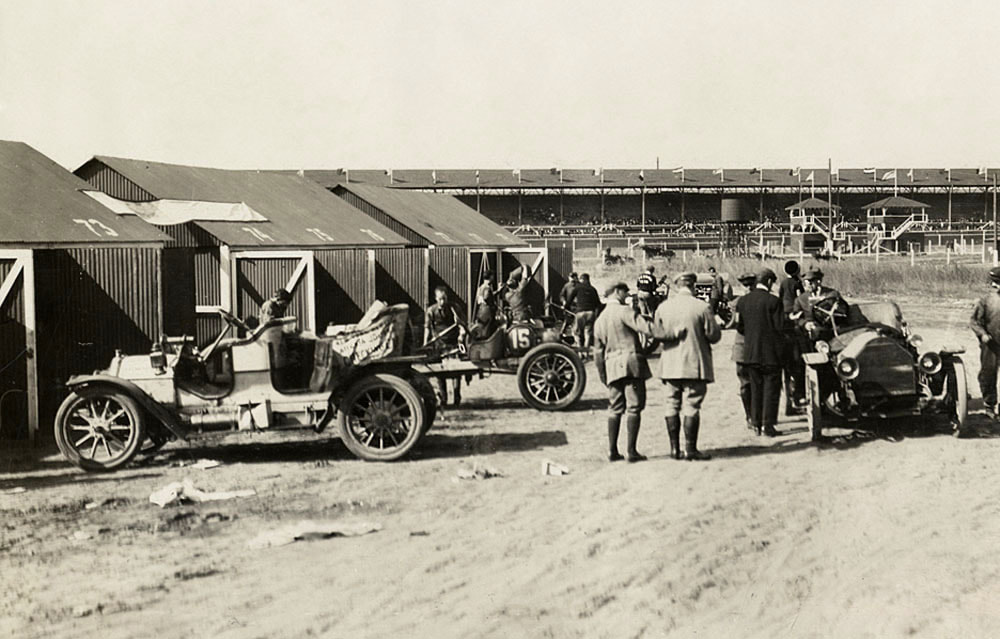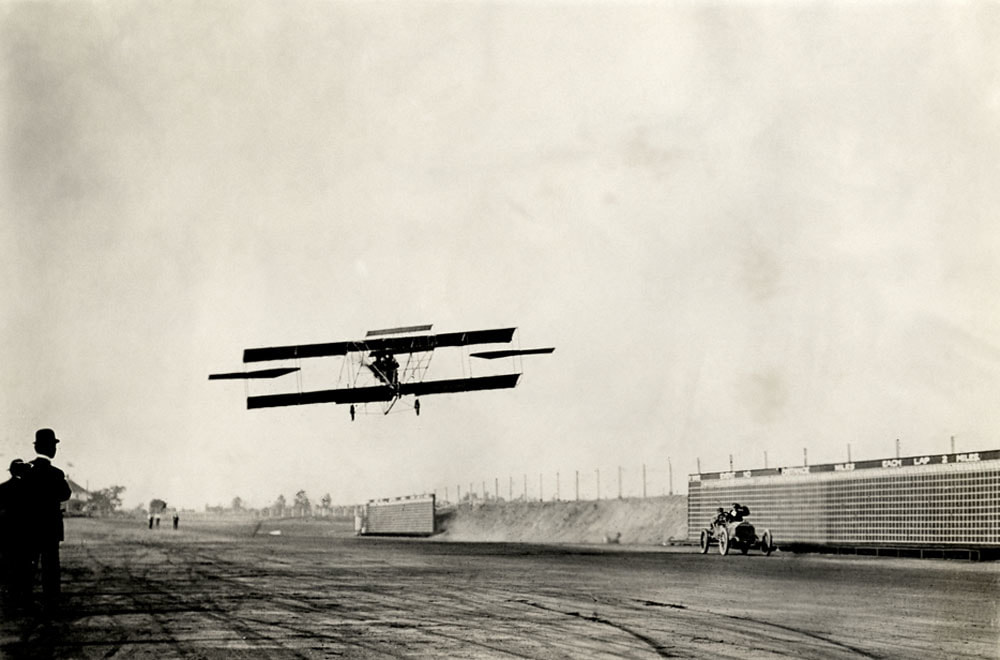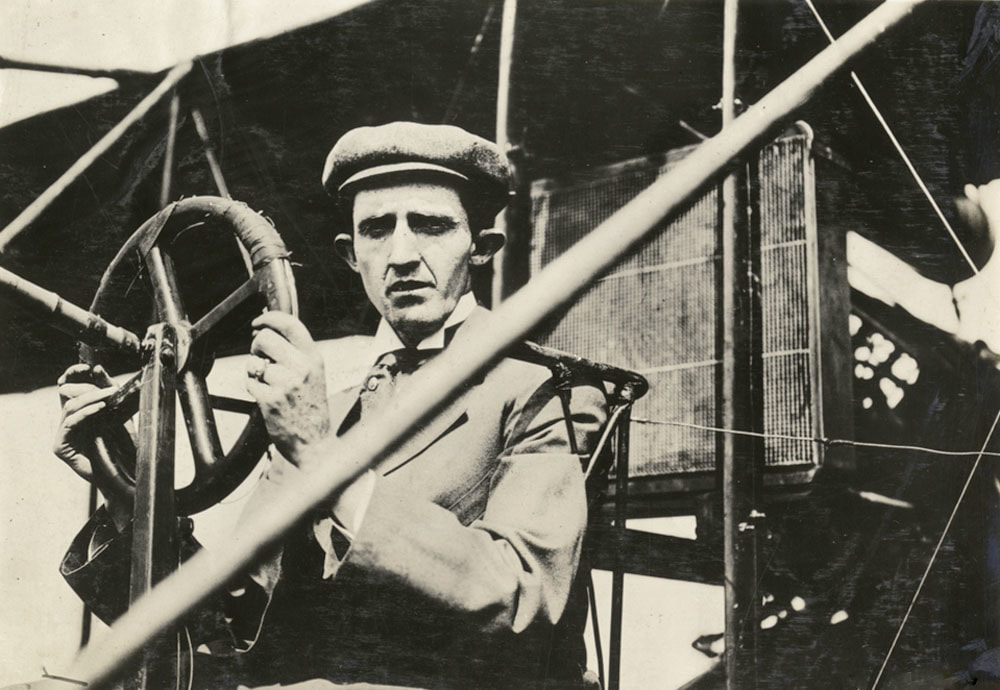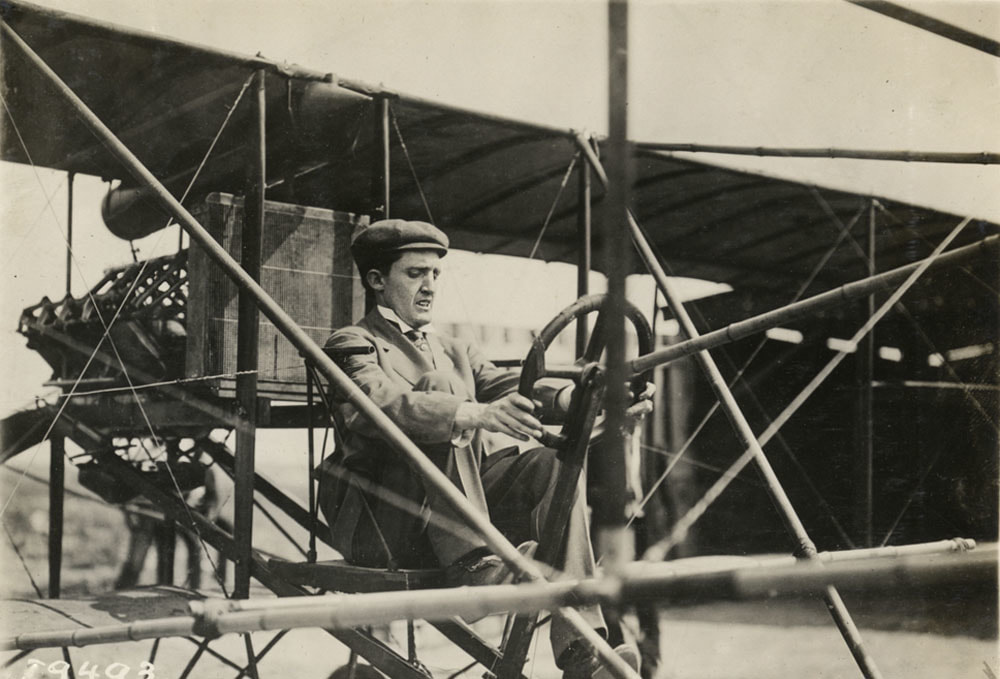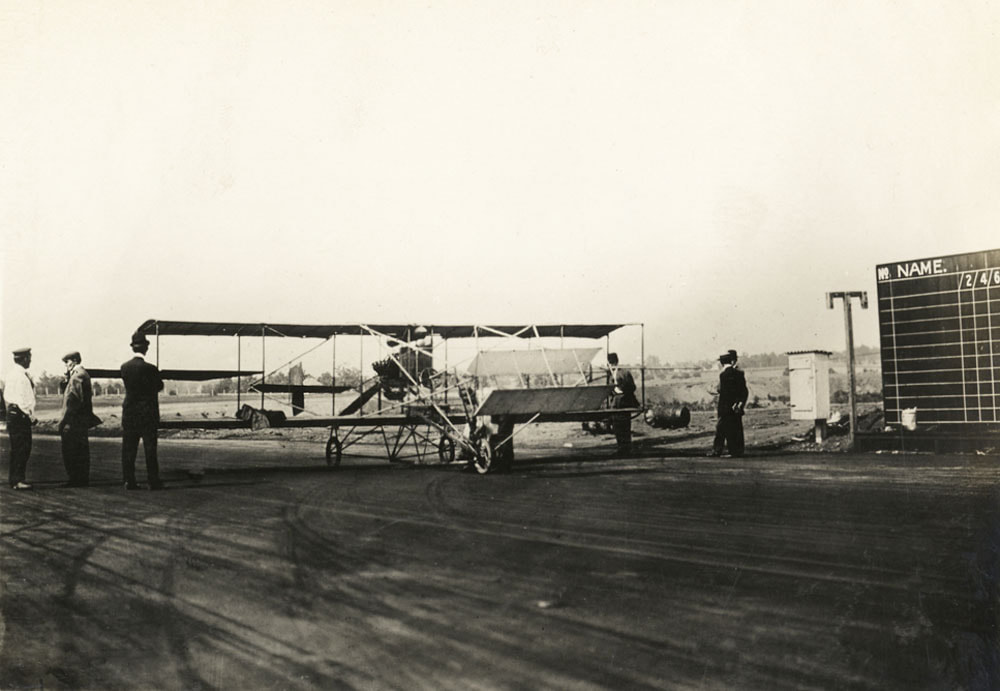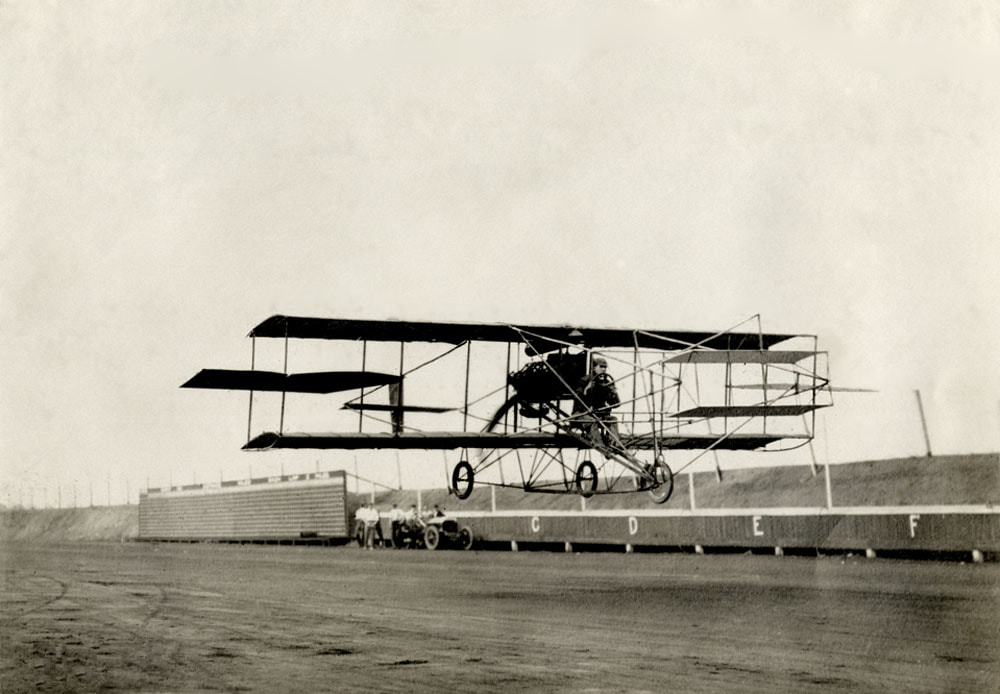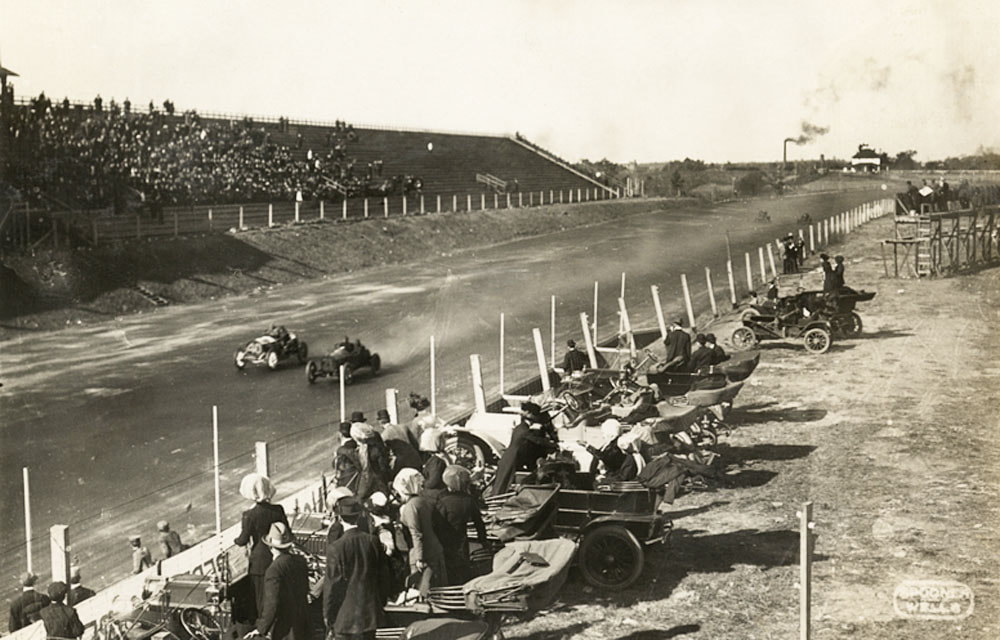THE RISE AND FALL OF THE ATLANTA SPEEDWAY
Hartsfield-Jackson Atlanta International Airport is located on what was once the Atlanta Speedway, a racetrack built in 1909 by Coca-Cola founder and one time Atlanta mayor Asa Candler, his son Asa Candler, Jr. and Atlanta businessman Ed Durant. The site, which was primarily farmland and swampy pastures at the headwaters of the Flint River, was chosen because it is one of the few relatively flat areas in the region. The Candlers organized a company called the Atlanta Automobile Association which assembled the 287 acre tract from 14 different properties. The assemblage was purchased in 1909 for $77,674.28 (equal to about $2.2 million today). The track, also known as Atlanta Motor Speedway, Candler Raceway, Automobile Speedway, and Atlanta Raceway, cost about $400,000 to build and opened on November 9, 1909.
This postcard, postmarked November 14, 1909, shows a fanciful, not-entirely-accurate artist's representation of the track. Judging from the Atlanta skyline in the distance, this would be facing north. The stands were actually on the opposite side of the speedway from what is shown here.
This postcard, postmarked November 14, 1909, shows a fanciful, not-entirely-accurate artist's representation of the track. Judging from the Atlanta skyline in the distance, this would be facing north. The stands were actually on the opposite side of the speedway from what is shown here.
The racetrack oval was located on what is now the extreme north end of the airport, an area that includes Delta's corporate headquarters and the Delta Flight Museum. This aerial overlay shows the track and its relation to the current layout of Hartsfield-Jackson Atlanta International Airport. The entrance was on the north end of the field off of Virginia Avenue and the south end of the oval was located on what is now the centerline of runway 8R-26L.
Here's a closer look. Delta's corporate campus now fills the northern half of the oval. A portion of Hartsfield Drive sits directly on top of the old straightaway on the western side of the racetrack.
Opening day of the Atlanta Speedway was Tuesday November 9, 1909 and was the event of the year. Thousands of spectators jammed the stands and, according to this article, seven world records were broken! Baseball legend Ty Cobb timed the races. The opening event was held in conjunction with the Atlanta Car Show.
This map, from the excellent Mototique blog, offers a wealth of interesting facts about the track:
Length - Two miles
Width - Home stretch, 100 feet; back stretch and curves, 60 feet; curves banked 10 feet; radius, 880 feet
Surface - Clay, sand and gravel with asphalt binder
Seating capacity - grand stand, 25,000; bleachers, 15,000
Length - Two miles
Width - Home stretch, 100 feet; back stretch and curves, 60 feet; curves banked 10 feet; radius, 880 feet
Surface - Clay, sand and gravel with asphalt binder
Seating capacity - grand stand, 25,000; bleachers, 15,000
A view of the Atlanta Speedway stands in 1909 taken during the "open house" prior to the opening day. The grandstand roof is not yet complete and some finishing details are still not in place. Courtesy of the Atlanta Journal-Constitution Photographic Archive, Special Collections and Archives, Georgia State University Library.
A similar perspective showing racers at the starting line in 1909. Photo from the Detroit Public Library Collection.
A full view of the grandstands and bleachers with the timing stands visible on the right. The building seen beyond the track was the racetrack clubhouse located on Virginia Avenue. The area to the left of the stands is now the site of the Renaissance Concourse Atlanta Airport Hotel. From the Detroit Public Library Collection.
This was the north end of the track and the stands would have been behind the photographer. Virginia Avenue runs left to right in the distance. The building seen near the center of the photo was noted as a tenant shack on a later aerial photo. From the Detroit Public Library Collection.
View of the track facing southwest from the timing tower with the grandstands on the right. The tree line in the distance is now the area of Atlanta's concourses D and E and the 2 north runways would run horizontally through this scene where the track curves left. From the Detroit Public Library Collection.
A great view of the parking lot during a race showing virtually no space between parked cars. This is the site of the 1961 Atlanta airport terminal and is now an aircraft apron just south of the Renaissance Airport Hotel. From the Detroit Public Library Collection
The turnstiles as seen from the stands, facing west. The sign above the entrance reads "No return checks issued." A trolley line was extended from Hapeville to the track although I'm not certain of the route. The sign just beyond the trolley says "Central of Georgia Railway express trains to the city." and there is a Coca-Cola sign above that. The sign on the building in the distance at left says "Near Beer and Georgia Barbecue". The field off to the right is now the location of the Renaissance Airport Hotel. From the Detroit Public Library Collection
The back side of the grandstands and the refreshment booth in 1909. Detroit Public Library Collection
The view from near the timing stands showing the rows of garages in the center of the racetrack oval. The white building beyond the garages at left was the infirmary for injured race car drivers. Detroit Public Library Collection.
Here's a closer 1909 view of the infirmary showing several nurses with the horse-drawn ambulance. This building can be seen in the aerial view from 1920 on the next page. From the Detroit Public Library Collection.
A view of the garages facing west with the track and grandstands in the distance. From the Detroit Public Library Collection.
The speedway was not a success and it closed after only one season. Undeterred, Asa Candler, Jr. began staging air shows and air races at the field in 1910, eventually adding motorcycle and car races back into the mix.
Famed aviator Charles K. "Man-Bird" Hamilton gave flying exhibitions at the Atlanta Speedway May 2-3, 1910 with his new Glenn Curtiss biplane. It was the first aircraft to land at what would eventually become the world's busiest airport. From the Detroit Public Library Collection.
According to the Wikipedia page about Charles K. Hamilton, he was "known for his dangerous dives, spectacular crashes, extensive reconstructive surgeries, and ever present cigarette" and was "frequently drunk". He survived more than 60 crashes before dying of tuberculosis at age 28 in 1914. From the Detroit Public Library Collection.
Hamilton's Curtiss biplane was constructed of bamboo, wire, wood and silk and flew at 50 miles per hour. From the Detroit Public Library Collection.
Charles Hamilton's aircraft on the racetrack, being prepared for the first flight of the day. Unlike most modern planes, the elevators were in the front and the propeller was in the back. From the Detroit Public Library Collection.
Flying down the 100 foot wide homestretch of the Atlanta Speedway. After the crowds departed, Hamilton flew around the track for a speed trial, timed by Asa Candler, Jr. The two mile track was circled in two minutes and twenty-one seconds. From the Detroit Public Library Collection.
November 1910 view of the racetrack, facing northwest from the timing stands. The racetrack clubhouse on Virginia Avenue can be seen at upper right and the smokestack in the distance was located in the industrial area along the railroad between Hapeville and East Point. From the Detroit Public Library Collection.
By the second season, only a year after opening, interest in the track had waned as evidenced by the half empty stands in the above photo. Within months, Asa Candler, Sr. cut his losses and closed the track for good. The debt was placed in Asa Candler, Jr's name, the property was foreclosed on and Asa, Sr. reacquired the abandoned half-million dollar track at auction for a mere $1,000 in 1914. At one point it was proposed that Emory University might relocate to the site, but those plans quickly fell through and the property remained idle. The next proposal would have a profound and lasting impact on Atlanta and the state of Georgia.

